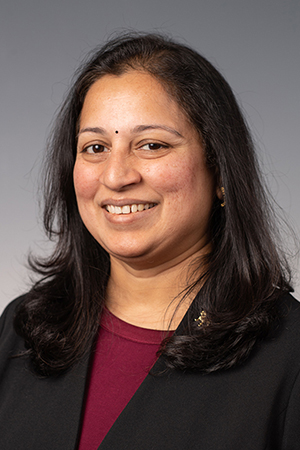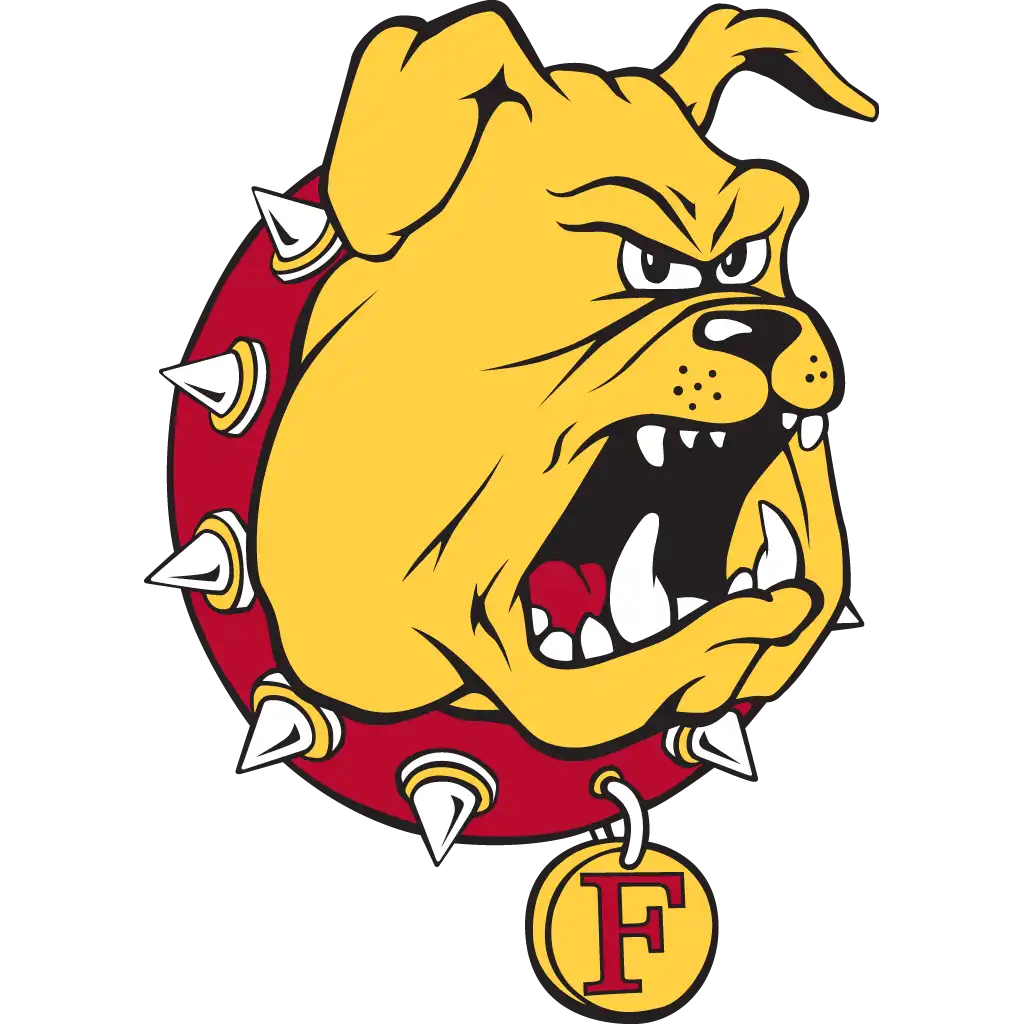Former Chief Technology Officer
by John Smith - March 29, 2021

The onset of COVID-19, in March of 2020, meant Ferris State University Chief Technology Officer Bhavani Koneru went from her first strides, as the leader of a crucial campus operation, to the lead administrator in assessing and shifting the remainder of spring semester learning to virtual instruction.
“I had been in my position for a month, getting acclimated with the campus and university leaders, when the call for virtual learning was made replacing sections of face-to-face instruction, for the remainder of the semester,” Koneru said. “Our immediate priority was to secure appropriate devices for students, along with assuring their connectivity, so they could manage to participate in virtual class sessions or eLearning. At the same time, we were scouring our buildings to provide technical resources for faculty and staff, who would either be leading classes from home through the Canvas platform or serving their departments remotely.”
Koneru said federal funds became available shortly after the pandemic. The funds helped secure the technology faculty needed for new instructional methods and students who required equipment to receive those messages.
“AT&T and Verizon were willing and helpful partners in quickly providing us MyFi units, which went out to students, faculty and staff,” Koneru said. “When we made use of laptops from university classrooms for those who needed computers to support their instruction or serve their department, our staff had to clean those units carefully and help us keep track of what had gone out to meet the need.”
With the campus closed down for months as COVID-19 numbers rose worldwide, Koneru said the need continued to assist those departments fielding calls and concerns from students, parents, and others needing to stay connected with the university.
“We had to enable remote operations for our IT Service Desk staff,” Koneru said. “We identified and engaged contractors, to allow those specialists to respond to calls, and most importantly, certify that those seeking assistance were identified, recorded and given the appropriate response to address their situation.”
Beyond serving as the call takers for those with technology questions, Koneru said IT staff were engaged in getting various service-related operations from across the university positioned to hear from and help those who wanted to communicate with them.
“Our student accounts staff in Administration and Finance, the Birkam Health Center, and Housing and Residence Life personnel all needed support to respond to inquiries from students and parents, and offer clear and accurate information,” Koneru said. “There were many concerns and questions about credits or payments, so seeing that these offices could answer inquiries and provide accurate information was a key consideration, a high priority in terms of student service, an important part of the university experience.”
Determining Summer 2020 classes would be virtual was announced in April. In the months that followed, as the COVID-19 situation was assessed, Koneru said that strategies shifted in addressing the technological needs of students, faculty and staff.
“We were literally patching up and piecing together the necessary elements of these operations in Spring 2020. In essence, it was a disaster response,” Koneru said. “We felt we were successful in that effort, though we reached our goal without working from an existing plan. We had a much more deliberate response to our efforts for the Fall 2020 semester, while we made some incredible responses to support our remote student learners and upgrade classroom technology, as requested by our colleges, departments, and faculty.”
Cameras, amplifiers, microphones and other equipment soon followed an assessment of classroom capabilities and, Koneru said, a significant amount of interaction with faculty who were preparing for socially distanced student arrangements in instructional spaces.
“We received information from faculty, who explained that in some instances, a camera with 360-degree projection would be the appropriate model,” Koneru explained. “Every effort was made to put the necessary technology before our faculty, so that face-to-face, hyflex instruction and both asynchronous and synchronous remote learning could go as well as possible.”
Koneru said that staff in Extended and International Operations, the Faculty Center for Teaching and Learning, and the Staff Center for Training and Development, were important collaborative partners. Those offices helped support and advance the capability of instructors, whose curricula needed sudden modification and adaptation, to continue in the Spring 2020 semester, and those that followed.
“It was necessary to counsel and train our faculty and address any problems that arose,” Koneru said. “There was a very high level of accommodation required to revamp certain teaching methods and techniques, and to their credit, our instructors accomplished their adjustments in short order.”
Teaching through Canvas was not a solution in itself for instruction with a more significant technological focus. Koneru said they collaborated with the faculty affected to identify and acquire programs to facilitate student learning.
“Apps Anywhere was the virtualization platform that we put into use for Digital Animation and Game Design, along with some instruction offered by College of Engineering Technology faculty,” Koneru said. “It is a resource-intensive platform that can be accessed remotely logging in with a device and making the necessary presentation.”
She added that the use of simulation technology meant that Plastics Engineering Technology students could participate in instruction that addressed injection molding without gathering a group in a laboratory setting.
“Even with these applications and advances, there will need to be more done to augment and enhance the learning experience for our students in virtual learning opportunities,” Koneru said.
Beyond finding appropriate tools to continue offering valid instruction, a program to upgrade connectivity has begun. Koneru said collaboration figures into this effort, as the Admissions office could secure $8,000 from the Michigan College Access Network to improve and increase the number of access points on the central campus.
“That allowed us to focus on access points at the Student Recreation Center, the Interdisciplinary Resource Center and the University Center building, where there are often people in parking lots seeking to use a tablet or laptop,” Koneru said. “Often there are prospective students with families, so we want those points to be accessible and attractive for use, by anyone seeking a good connection.”
IT Services also looks to advance the access points in university buildings, which Koneru said is imperative for the successful operation of the internet of things that are an absolute necessity with current and future technologies.
“We will strive to improve connectivity across campus,” Koneru said. “There can be better delivery of that service in all areas, so that is our goal. It is important because connectivity is a growing aspect of our students’ experience with the university, as it applies to their learning and other usage experiences. We want those to be successful and of great benefit to them. Beyond that, in the internet of things, there are devices, sensors and software that afford the university greater efficiencies, so the access points must grow to assure their operations and abilities.”
While attempting to bring along the skills of faculty whose virtual instruction experience was non-existent or negligible, Koneru sought to illustrate Ferris’ abilities to serve the technology needs of students, faculty and staff.
“It is an important initiative to demonstrate and express the need to make our connectivity and IT customer response be among our assets,” Koneru said. “I have been working since I came to campus to create relationships with leaders across the university, along with making clear that financial resources will be required to accomplish many necessary projects. Then, we can tell prospective and current students of the planning and effort we have applied to put those upgrades in place, with our goal being their success, here.”
Koneru came to Ferris with more than a decade of experience in IT leadership roles at Wayne State University, which followed nearly 10 years of private sector service, focused on consultancy to higher education clients.
“My role in most of these positions involved the assessment and delivery of the latest applications to advance the operations of those departments, or universities,” Koneru said. “I am very much results-driven in my work and strive for operational excellence, believing that through achieving small wins, major goals can be reached. It is important to build relationships with my peers and superiors, to impress upon them the value and necessity to continually advance their technological capabilities.”
The improved functionality of Ferris goes beyond the main task of educating students and supporting the faculty who lead that learning process, according to Koneru.
”Our implementation and advancement of technology should be an integral aspect of strategic goals, university-wide,” Koneru said. “We can help the decision-makers in each area by their incorporating this philosophy as a key component of their service model.”
Knowing university resources, including finances, are not unlimited to accomplish such goals, Koneru said she takes a practical approach to promote the best possible blend of new technology and existing operations are available to serve that operation.
“I work to make sure the appropriate data is before our leadership, so they might make the proper decision to achieve departmental or university aims and present the educational product that students deserve and are seeking,” Koneru said.
As the progression over time from blackboards to overhead projections to laptops, mobile devices, and online instructional platforms indicates, Koneru’s role is one of ceaseless advancement of university systems and applications to support and benefit the experience and results in the classroom and all organizations.
“A digital campus or the digital transformation of the university is clearly the direction that is being taken in higher education,” Koneru said. “We are changing the instructional norm by digitizing it. This can be seen at advancing the instructional level when we review what kind of data is being provided for learning and then provide the toolsets to deliver that data to inform and enrich our students. This goes beyond the face-to-face teaching method, as well as virtual learning. Digital transformation is a crucial factor in problem solving and decision-making. Whether my department’s contacts are faculty members or campus administrators, our goal is to see that they have the proper technology to meet their responsibilities.”
The IT Services department Koneru leads has to face this same level of transformation to support the advancements they suggest through their interactions across campus.
“The emphasis on information technology, within our ranks means our IT Service Center
should be working toward the application of artificial intelligence,” Koneru said.
“The use of chatbot is a prospect that could facilitate those interactions and use
of AI can also be applied in matters of data governance, data assessment and information
technology governance.”
Lastly, Koneru said she hopes to promote technology as a tool for advancement, beyond
the management of the institutional status quo.
“As Ferris works to promote its opportunities for research excellence, our department will work to be a supportive partner in that pursuit,” Koneru said. “Analytical toolsets have an important place in new learning, just as they are a necessary element of the instruction of our students and the administration of the university, as a whole.”
John Smith is the communications specialist in the News Services and Social Media
department of University Advancement and Marketing.
For others featured in the Faces of Ferris series, visit:
https://ferris.edu/HTMLS/news/faces/

